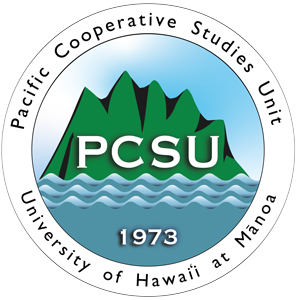
Photinia
REPORT IF SEEN: Contact BIISC to schedule a free removal
Photinia (Photinia davidiana) is an invasive horticultural plant native to southern China and northern Vietnam. The first naturalized collection occurred in 1940 near the Nauhi cabin in Hakalau after escaping cultivation. This plant is versatile and can grow at many different elevations and soil types. However, because it is shade tolerant, photinia forms dense thickets in the understory of koa, ohia, olapa, mountain ohelo, and many more native species, preventing their regeneration. In addition, the bright red berries are attractive to birds and mammals, making them easy to spread.
Impacts:
- Grows in high elevation tropical climates, becoming a weed in forest reserves
- Host of fireblight pathogen
- Tolerates shade and many soil types
- Forms dense impenetrable thickets
- Seeds are spread by birds and mammals
Description:
- Evergreen broadleaf shrub that can grow up to 15
- Oblong dark green leaves that are 2″-4″ long. New leaves have pinkish-bronze tones
- Five-petaled white flower that grows in close clusters
- Small 1/4″ berries that turn red when mature
- Found from 3,000- 6,000 ft
Photinia (Photinia davidiana)



Photos (L-R): BIISC, Forest & Kim Starr, BIISC
BIISC’s Control Efforts
The BIISC team is working to control Photinia in the Hakalau Forest National Wildlife Refuge.


